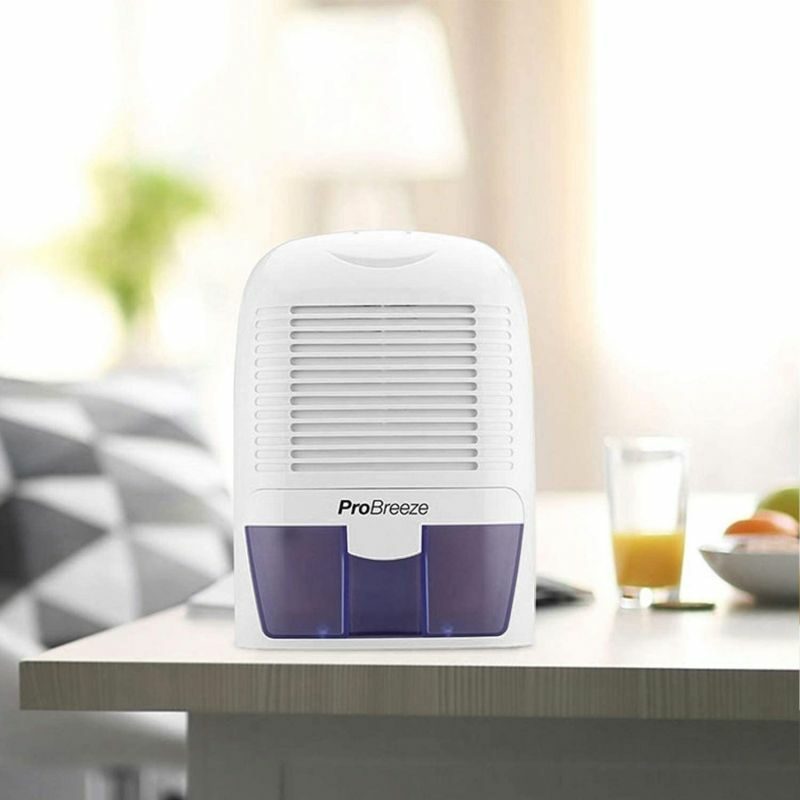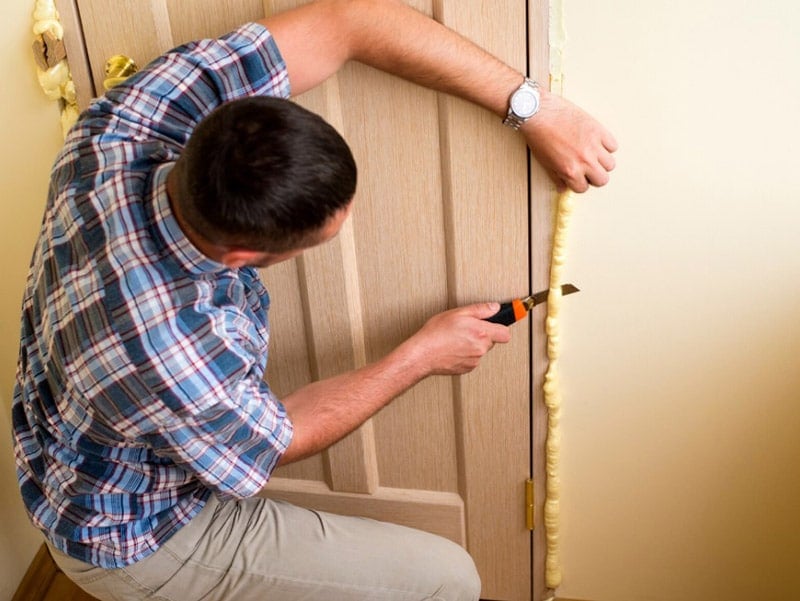Why can’t your dehumidifier get your room below 60% humidity? You might have improper insulation. Here are some useful suggestions.
Excessive humidity is any homeowner’s worst enemy. Not only does it make the whole house smell bad, but it can also ruin your upholstery, and create mold within your drywall.
A true nightmare, if I’ve ever seen one.
Luckily, modern technology has provided us with several tools, such as dehumidifiers, to counteract the effects of this condition, and keep the aforementioned situations from happening.
However, sometimes not even these wonderful appliances are enough to keep your living spaces below 60% humidity, which, if you’re reading this, is something you’ve had to learn the hard way.
I understand what you’re going through, I really do. I’ve had this problem myself, and the cost of having to remove the mold from my walls and furniture, was astoundingly high.
This is why I want to help you. No one should have to spend their hard-earned money on repairing damage that could have been prevented.
Below, you will find a list with some tips you can try in order to get your room’s humidity levels below 60%, and keep your home dry. Rest assured that, if you follow them religiously, the situation should be under control very soon.
Have I piqued your interest? Let’s get to work!
Getting Your Room Below 60% Humidity
I know the most logical thing would be to blame the appliance right away, but there are many other factors at play here. More often than not, excessive room humidity is not your appliance’s fault.
In a lot of cases, weather conditions and improper room insulation, are much more likely to keep your room humid, than a faulty dehumidifier. Let’s not jump to conclusions, and go about this process patiently.
#1 Check the Weather
Extremely humid areas can make your appliance struggle
This might seem too obvious. But sometimes we can get so caught up in the possible malfunctions within the appliance itself, that we forget about looking at the external factors as well.
Depending on where you live, extremely humid conditions could be preventing your appliance from dropping the moisture levels below 60%. This can be counteracted by closing your windows, and keeping the room as insulated as possible.
However, if you’re already doing all this and the problem persists, you might have to spend some money on an additional dehumidifier, or other cheaper solutions.
I know this likely isn’t what you wanted to hear. But sometimes the weather is just too inclement.
#2 Try a Smaller Room
Check your user manual to find your unit’s recommended room dimensions
They might not seem like it, but dehumidifiers need several specific conditions to be met in order to function properly.
One of them being room dimensions.
Larger rooms need larger dehumidifiers, there’s just no way around it. No matter how high you set your appliance to work, if your room is too large for your specific model, it will never go below 60% humidity.
I’ve met people who have two or even three dehumidifiers in their large living rooms in order to guarantee proper dehumidification. Now, this might be overkill unless your living spaces are as large as Cinderella’s ballroom, so relax.
The best way to tell whether you need another dehumidifier, is by getting a moisture meter, setting your unit to the maximum fan speed, and measuring after an hour, or so.
If you think the room is not too large for your appliance, and believe there to be a malfunction, refer to your user manual. You should be able to find in there the recommended room dimensions for the model you own.
Assuming you do need other dehumidification solutions, you can try using those popular pellet absorbents sold at hardware stores. These should be enough to get your humidity percentage to the desired level when combined with your unit working at the highest settings.

#3 Use Higher Settings
You might be setting your dehumidifier too low
This is especially likely if you like to run your appliance on auto mode.
The feature is extremely useful, and a great time-saver. But, your dehumidifier’s independence comes at a cost.
While your machine should be able to accurately detect the humidity levels in your room and adjust its settings accordingly, the preset configurations are not perfect.
You might be able to get your living spaces below 60% humidity if the climate in your area is not too humid. But if you live near the coast or somewhere where it’s always cloudy, only the maximum settings might work for you.
I would advise placing your dehumidifier in the room you want to dry, letting it run for an hour at the maximum settings, and then measure the humidity levels. If this works, mystery solved.
You’ll use more electricity, but you’ll be saving much more money by preventing moisture-related damage to your upholstery and drywall.
#4 Insulate Your Room
Keep the outside weather from entering your home
In theory, your room should already be insulated, but if you live in an old house, the foam in your walls and ceiling might have failed the test of time.
Your dehumidifier can work wonders for you, but it’s not magic. Even the newest, most efficient appliance, cannot counteract the effects of a poorly insulated living space.
The best way to tell whether your room needs to be insulated again, is by looking out for air currents, mold, and cold spots.
When the insulating foam is unscathed, the temperature across your room should be even, and no air currents should be present, unless there’s a door or a window open.
If the weather conditions where you live are not very harsh, but you still can’t get the humidity level below 60%, there’s a very good chance that your insulation is compromised.

#5 Replace the Coils
Your coils might be malfunctioning
Okay, now that we’ve ruled out all external factors as culprits, it’s time to take a look at your internal components. If your dehumidifier can’t get the room below 60% humidity, there might be something wrong with the coils.
In case you’re not familiar with what these are, let me briefly explain. Every dehumidifier has two coils, one that runs hot, and one that runs cold.
The latter condenses the air that has been pulled in by the fan, and removes the excessive moisture, while the former warms it up, and releases a drier current back into the room.
Without this process, dehumidification is impossible. So, any malfunction in either coil can greatly decrease your appliance’s functionality.
It is of the utmost importance that, as soon as you suspect this to be the source of the problem, you address it immediately. Putting this off for too long can result in frozen coils, and significant damage to your unit.
#6 Replace the Fan Motor
No fan, no dehumidification. It’s that simple
Lastly, let’s take a look at your fan’s motor.
As stated above, this part is essential to the dehumidification process. The fan is responsible for pulling in air from your room, and distributing it evenly throughout your coils for moisture removal.
When your fan’s motor is working normally, and assuming that no external factors are working against you, your appliance should be able to get you below 60% humidity.
However, any malfunction in it can compromise airflow, and make dehumidifying the air much harder, if not impossible. It is strongly advised that you keep your air filter clean, and your fan blades in pristine condition, as these are the two most common sources of damage to your fan’s motor.
Just as it happens with suspicious coils, it is of the utmost importance that you stop using your unit until you replace the damaged motor.
Trying to keep operating your appliance under these conditions can cause it to overheat, and reduce its lifespan significantly.
If you want to get any replacement part – or see how much one would cost – click to enter your model number in the search bar below. Our partners at AppliancePartsPros stock almost every part with free guides on how to install them.

Conclusion
To own a dehumidifier that is unable to get your room’s humidity levels below 60%, can be very inconvenient and frustrating. After all, you bought this appliance to make your life easier, so why is it failing to do the one thing it’s supposed to?
Now, not only do you have to figure out what the problem is, but also come up with a solution for it.
What a disaster!
Fortunately, as I hope you’ve learned in this piece, addressing most of the causes behind this situation is fairly simple, and not very time-consuming.
More often than not, giving your appliance proper maintenance, and cleaning it regularly, as well as making sure your room is isolated correctly, is all you need to do to get the results you want from it.
Thank you so much for sticking with me all the way to the end. If you found this article helpful, why not keep the learning going through our other incredible resources below?
Enjoy your damp-free home!







